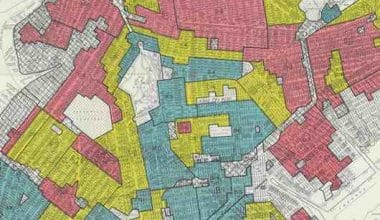When conducting studies, analysts and researchers employ a range of techniques, and secondary data analysis is one of those techniques. Simply put, it is a technique that draws on existing data and knowledge. This approach can reduce the time and cost of the research process. In this article, we define secondary data analysis, describe its procedures, discuss how academics employ it and offer several examples to help you understand the term better.
What is Secondary Data Analysis
The term “secondary data analysis” refers to using data from earlier studies to address new questions. Although there is broad consensus over disseminating the findings of large-scale surveys, there is minimal consensus regarding the second. The underlying ethical concerns surrounding the secondary use of research data are still there, but they are now more urgent due to the development of new technologies. New worries regarding data security and confidentiality have also emerged.
Secondary Data Analysis Techniques
Researchers can use diverse techniques to collect and evaluate the data they need for secondary data analysis. These consist of the following:
#1. The Internet
The Internet is a widely used and comprehensive source of information. Information is frequently accessible and free. To discover and use only reliable websites and data sources is difficult for researchers.
#2. Libraries
Public libraries provide extensive collections of books, periodicals, and electronic versions of materials, including corporate directories, government documents, market research findings, and published research. Compared to community libraries, libraries connected to educational institutions may have more extensive collections.
#3. Government and Non-Government Organizations
Organizations like the United States Census Bureau gather and preserve essential research data, particularly on demographics, health data, and public policies. The data is reliable and accurate, but researchers must request access and may have to pay a charge to get it.
#4. Institutions of Higher Learning
Faculty at colleges and universities frequently do primary analysis, the results of which researchers might request access if they are not made available to the public. To obtain the information they require, they might have to get in touch with the department or primary study author.
#5. Commercial Sources
Researchers can use magazines, newspapers, radio, and television, especially for information on markets, demography, economics, and politics. Many of these sources have conducted market research, which is helpful to analysts and scientists.
#6. Personal Sources
A researcher or sociologist may be able to access previously unpublished data from a researcher or sociologist they are acquainted with. That person has already gathered the data, and they might or might not intend to use it in their research.
How Secondary Data Analysis is Used by Researchers & Academics
Researchers frequently use secondary analysis to formulate hypotheses or find answers to issues. The actions they might take are as follows:
#1. Establish the Study’s Objective
The researcher must first decide which question they are attempting to address. They may need to concentrate on one or more essential questions to acquire information and draw a conclusion. They can decide what data to obtain and where to locate it once they have developed their research questions.
#2. Identify and Gather the Necessary Data
To gather data, they should become aware of what is already available. This procedure could entail requesting and compiling data and documents from various places, including research libraries and centers.
#3. Sort the Information
All of the secondary data should be combined and compared by the researcher. They can eliminate or combine any duplicate information if they locate it. The remaining information should then be arranged in an accessible way for use and reference.
#4. Review the Data
The researcher must then assess the data to determine whether it is reliable, accurate, and pertinent to the research. Before putting the data to use, they should finish this stage.
Secondary Data Evaluation Sociology
Sociologists often conduct original research studies and analyze secondary data to advance the field’s understanding. Sociologists may read writings by early sociologists, historians, economists, educators, or teachers. They might look through any era’s books, journals, newspapers, and magazines.
Analysis of Primary Data in Sociology
Primary data are facts gathered directly from sources. It is “original” research that the researcher concludes, which can be done in various ways. Let’s quickly go through a few of these.
Surveys
Social surveys are expected in sociology, market research, and governmental agencies. Surveys are made of pre-written questionnaires arranged in standardized order so that every responder is asked identical questions. They can include several questions, including “yes or no” and multiple choice questions, and can be used to collect information on various subjects.
Questionnaires
Most frequently, surveys are postal, which means they are mailed to specific residences. Respondents complete the survey and mail it to the specified address.
Four different styles of interviews exist. These include
- Organized
- Unstructured
- Semi-structured
Sociology Secondary Data Analysis
Data that another party has already gathered is referred to as secondary data. Official statistics are a common secondary research technique used in sociology.
- Official Figures
These statistics were gathered by various departments and/or agencies of government. Any government department or agency can publish statistics, but the UK’s Office for National Statistics (ONS) publishes them frequently. The NHS is another case in point.
Secondary Data Analysis Dissertation
Some fundamental facets of conducting secondary research have been covered in earlier sections of this guide. We have defined secondary data, discussed its benefits and drawbacks, introduced secondary research techniques and objectives, and described the categories and sources of secondary data.
#1. Build your research question(s)
Like any other study, secondary research starts with developing your research question(s).
Your supervisor will frequently provide you with a clear research issue for your undergraduate thesis. However, for most other sorts of research, mainly if you are writing your graduate thesis, you must develop your research question.
#2. Choose a Supplementary Data Set
As we previously discussed, most research starts by outlining what is currently known about the subject and what information appears lacking. The type of data that has already been gathered on the subject is taken into account during this process.
After examining the literature and defining your research objectives, you may rely on secondary data at this point.
Secondary Data Analysis Examples
Popular techniques and illustrations for secondary research include the following:
#1. Information Available Online
The Internet is among the most widely used platforms for gathering secondary data. On the Internet, data is easily accessible and may be downloaded with a single click.
Businesses and organizations can leverage websites’ wealth of information to meet their research needs. However, organizations must only use reliable, trustworthy websites for gathering data.
#2. Governmental and Non-Governmental Organizations
Some government and non-government organizations may also provide data for secondary research. Businesses and organizations can use the valuable and pertinent data that the US Government Printing Office, US Census Bureau, and Small Business Development Centers have to offer.
#3. Community Libraries
Another excellent place to look for data for this project is public libraries. Copies of significant earlier research are available in public libraries.
Each of these public libraries offers a different range of services. Many government publications, including market statistics, company directories, and newsletters, are frequently available in libraries.
#4. Institutions of Learning
It’s common to undervalue the value of gathering information from educational institutions for secondary research. But compared to other corporate sectors, colleges and universities conduct the most research.
Universities mostly use the data they gather for primary research. Businesses and groups can, however, go to educational institutions and ask for information from them.
#5. Business Information Resources
Local radio, TV, newspapers, journals, and magazines are excellent places to find information for secondary research. These commercial sources provide first-hand details on demographic segmentation, market research, political agenda, and economic changes.
Limitation of Secondary Data Analysis
Secondary research is often not very useful for two key reasons:
#1. Lack of Significance
You won’t always get all the answers you need through secondary research. The secondary data collection goals and techniques may be inappropriate for the current issue.
Additionally, the methods employed to acquire the data could not have produced the information required to support your business decisions (for instance, qualitative research methodologies are inappropriate for go/no-go determinations).
#2. Lack of Precision
The secondary data may be inaccurate and incomplete depending on the research strategy. Other factors include the following:
- Target audiences and sources for the sampling (recruitment techniques)
- Method of data gathering (qualitative and quantitative methods)
- Point of view from an analysis (focus and omissions)
- Stages of reporting (preliminary, final, and peer-reviewed)
- Lack of consensus across data providers.
What is an Example of Secondary Data Analysis?
An example of secondary analysis would be a graduate student building on the work of their advisor. Sociologists offer a fresh interpretation of historical data.
What are the four Types of Secondary Data Analysis?
- Statistical investigation.
- Case studies.
- Evaluations of related literature.
- Content analysis.
What is Secondary Data Analysis in Research Methods?
When a researcher uses the information compiled by another researcher or data collector to carry out a study with a goal distinct from the original research, this is known as a secondary analysis. Surveys, government records, official statistics, academic research, and archival data repositories are all secondary data sources.
What is Analysis of Data Secondary in Qualitative Research?
The utilization of qualitative data gathered by someone else or to respond to a different research question is known as qualitative secondary analysis (QSA). The possibility to increase data utility is provided by secondary analysis of qualitative data, particularly for patient populations that are challenging to reach.
Is Secondary Data Analysis Quantitative or Qualitative?
Although most SDAs rely on quantitative information, some qualitative investigations are amenable to SDA. As opposed to secondary source data (such as a medical record study), the researcher must have access to primary source data.
Conclusion
Secondary data sets are frequently obtained for little to no cost, are easily accessible, and don’t require incentives for study participants; secondary data analysis typically requires less time and financial resources.
Related Articles
- Best Library Management System: Components and Objectives
- SECONDARY MARKET: How to Trade on the Secondary Market
- PRIMARY MARKET RESEARCH: Meaning, Methods, Examples, Comparison
- MARKETING RESEARCH PROCESS: Detailed Guide
- VIRTUAL BOOKKEEPING: Best Services and All You Should Know
- WHAT IS A TECHNICAL SCHOOL: What it is and Why it Might be Ideal for You
- BUSINESS REVENUE: Meaning, Example, Difference & Calculator






